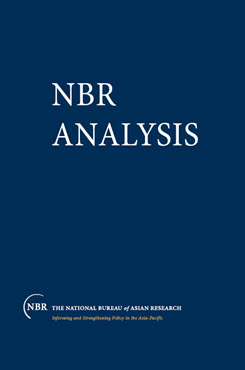NBR Analysis vol. 17, no. 4
Abe Shinzo and Japan's Change of Course
Through the lens of Abe Shinzo’s September 26, 2006, election as Japan’s new prime minister, this report examines the fundamental changes that are redefining Japan’s foreign policy strategy.
Japan is making a revolutionary change of course. [1] The election of Abe Shinzo as Japan’s new prime minister on September 26, 2006 dramatically symbolizes the forces impelling Japan on this new course in its foreign policy. These forces are ones that have motivated Japan at many turning points in its modern history. They are basically three: changes in Japan’s external environment, the pragmatic style of Japan’s conservative elite, and generational change.
Through a century and a half of its modern history Japan has demonstrated a pattern of adapting both its foreign policy and its domestic institutions to fit fundamental changes in the international system. Abe’s election is an unmistakable indication of Japan’s maturing response to the far–reaching changes in its post–cold war environment. In the fifteen years after the end of the cold war Japan struggled with the vast changes in its external environment. The nation was deeply disoriented by the end of the bipolar system on which its foreign policy and domestic political and economic institutions were predicated. The globalization of capitalism disrupted Japan’s distinctive economic model. The end of the cold war also fundamentally changed the premises of Japan’s grand strategy, known as the Yoshida doctrine. In addition, the emergence of a proactive and competitive Asia, especially the rise of Chinese power, challenged Japanese leadership in its own region where it had long been accustomed to weak and backward neighbors.
The ability to adapt to changes in the international system has been the trademark of the conservative leadership tradition from which Abe springs. Pragmatism and opportunism have been a principal source of the resilience that has allowed the conservative elite to dominate Japan for a century and a half. No political leader in Japan today has deeper roots in this elite than Abe. His family hails from Yamaguchi Prefecture in the southwest—the area that provided leadership of the Meiji Restoration (Japan’s modern revolution in 1868) and produced eight of modern Japan’s prime ministers (as well as much of the pre–war army leadership). His father served as foreign minister in the 1980s and was destined to be prime minister before he died early of cancer. His great uncle, Sato Eisaku, served longer as prime minister (1964–72) than any other figure in Japanese history. (Through Sato, Abe has family ties to Matsuoka Yosuke, the foreign minister who negotiated Japan’s Axis alliance.) Both Abe and his brother have marriage…
[1] This essay draws on research done for a project supported by the Century Foundation; the project has resulted in the author’s forthcoming book, Japan Rising: The Resurgence of Japanese Power and Purpose (PublicAffairs Books, 2007).


